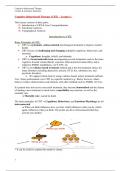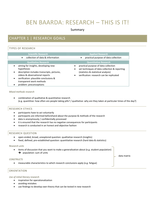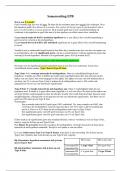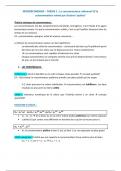College aantekeningen
Full CBT Summary 2023
- Instelling
- Universiteit Utrecht (UU)
This summary contains lecture notes and literature summaries for each lecture given for the academic year 2023/2024. Received a grade of 7.7 with these notes.
[Meer zien]






